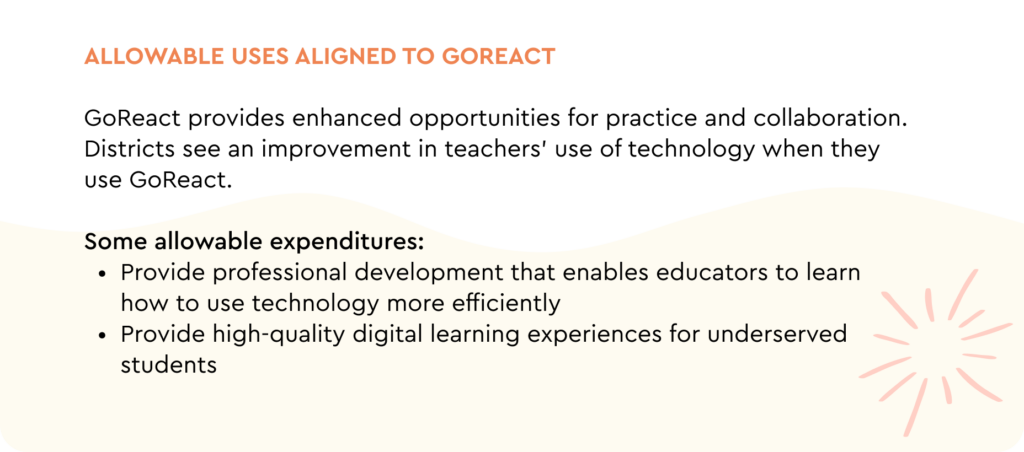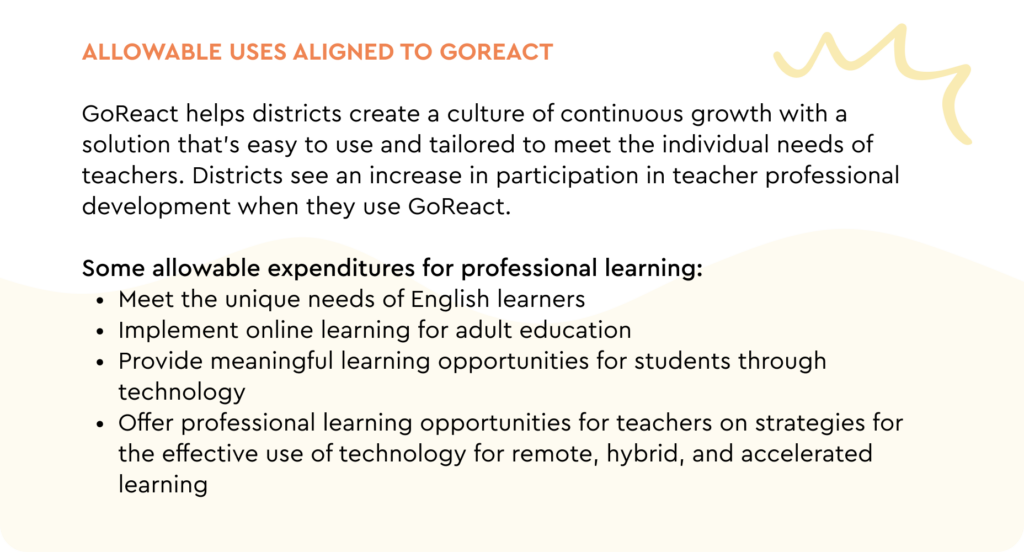Investing in the professional development of teachers is a crucial aspect of ensuring high-quality education for students. There are several funding options available to K-12 school districts to support teachers and their development, including federal and state funding. As the deadline for some funding sources approaches this school year, we will explore some of the funding sources that school districts can utilize for teacher development.
Federal Funding Options
The federal government provides funding to support teacher development through various programs.
Title II, Part A
This program provides funding to improve teacher quality, increase student academic achievement, and enhance the quality of professional development for teachers. School districts can apply for Title II, Part A funds to support teacher development programs such as mentoring, coaching, and training.

Title IV, Part A
This program provides funding for student support and academic enrichment. A key component is helping teachers and staff effectively utilize technology.

Elementary and Secondary School Emergency Relief (ESSR)
This program provides funding to mitigate learning loss from Covid-19. Professional development is specifically authorized in ESSER for a number of scenarios to improve student learning.

Additional Federal Funding Options
There are several other federal programs available to support the improvement and support of teachers:
- Teacher and School Leader Incentive Program (TSL): This program provides grants to states, districts, and nonprofit organizations to develop and implement teacher and school leader compensation systems that are based on performance and are designed to improve student outcomes.
- Supporting Effective Educator Development (SEED) Grant Program: This program provides funding to support the development, implementation, and evaluation of innovative and evidence-based approaches to professional development for teachers and principals.
- School Improvement Grants (SIG): These grants provide funding to support the implementation of comprehensive school reform efforts in low-performing schools. The grants can be used to support teacher development programs such as coaching, mentoring, and training.
State Funding Options
State governments also provide funding to support teacher development. State funding can come from various sources, including state budgets, lottery proceeds, and grant programs.
Examples of state funding options for teacher development include:
- Educator Effectiveness Grants: These grants provide funding to support the development and implementation of high-quality teacher and principal evaluation systems, as well as the development of effective professional development programs.
- Teacher Recruitment and Retention Grants: These grants provide funding to support the recruitment and retention of high-quality teachers in high-needs schools.
- State Professional Development Grants: These grants provide funding to support the development and implementation of high-quality professional development programs for teachers and principals.
- State Technology Grants: These grants provide funding to support the implementation of technology-based professional development programs for teachers.
Federal and state funding options provide K-12 school districts with resources to invest in the professional development of teachers. These funding sources can be used to support mentoring, coaching, training, compensation, and other professional development programs that are designed to improve the quality of education. By investing in teacher development, school districts can improve the quality of education and prepare their students for success in life.
Ready to see how you can use federal and state funding to purchase GoReact?










